Edible Resource: School Food Garden Lesson Planning with Seedlingstories
Posted: March 11, 2015
Categories: Edible Education Network / Food in the News / GoodFoodBites
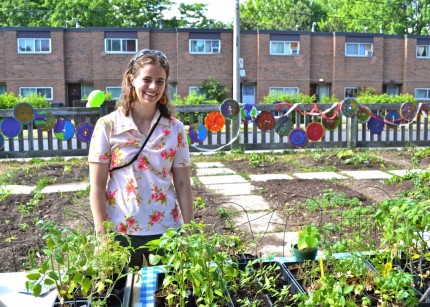 Thank you to Elin Marley of Seedlingstories for sharing this incredibly resourceful write-up with the Ontario Edible Education Network (some lesson plans attached!):
Thank you to Elin Marley of Seedlingstories for sharing this incredibly resourceful write-up with the Ontario Edible Education Network (some lesson plans attached!):
Reading through the Ontario K-8 Curriculum might not be on the top of everyone’s list of inspirational reading. But a couple of years ago, that’s exactly where I went for inspiration in my school food garden lesson planning. And, well, I got surprisingly excited!
Since the spring of 2010, I’ve been working as a School Garden Educator at a few Toronto elementary schools. Since my first season where I only worked at one school, I’ve worked my way up to four schools where I work on a weekly basis (as well as occasional work at some others).
In my first year, I was constantly online and digging through various books (and bugging lots of people) looking for garden-specific lessons. Some of my favourite resources were (and still are) FoodShare Toronto, Edible Schoolyard, Children’s Eco Programs in High Park (ok, full disclosure, I work there too!), Patterns Through the Seasons, and Shelburne Farms.
That first year as Garden Educator, I had about a dozen lesson plans on offer for all grades, from Kindergarten to grade 6; some were aimed at younger grades and some at older, but overall they were pretty general lessons.
As I continued to work at the same schools season after season, I realized that my lessons should be more grade-specific; if I worked with the same kids in grade 2, 3, 4… I wanted to make sure I had new lessons for them as they got older, and that I wasn’t just repeating the same things with them year after year after year. Around that same time, the teachers (influenced by parents and principals) at my first school were asking to see the specific curriculum links for the lessons I was offering. Initially, I started reading through the curriculum hoping to link my existing lessons to the curriculum, and seeing which grades each lesson were most appropriate for. I didn’t realize how many new lessons this process would inspire! 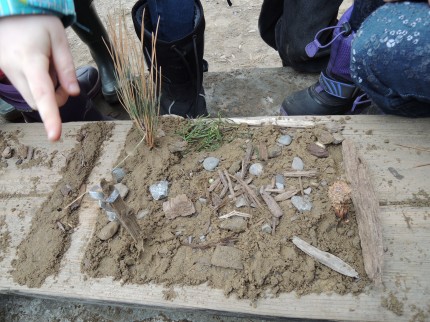
Reading through the curriculum, I realized that an activity I came up with 10 years earlier while working at summer camp would actually be a fun way to introduce mapping to grade 1’s. I call this lesson “Nature Garden Maps.” (Grade 1: Math: Geometry and Spatial Sense: describe the relative locations of objects on concrete maps created in the classroom). After a brief in-class introduction about maps, we head outside to the garden. We go and check out the garden and look at what are the most important things in the garden (e.g. fences, garden beds, compost bins, paths…). The kids then work in small groups to collect natural items in the garden and schoolyard (having been guided not to pull parts from living plants). They then use these found objects to create a map of the garden. At the end, the class takes a tour of all the maps, and we often take pictures before dismantling the maps, so that teachers can refer back to the maps in their classroom lessons.
One thing I’ve realized while doing this lesson over the years is how abstract and complicated the concept of mapping can be. When I started doing this lesson, I would get frustrated that I clearly hadn’t explained maps well enough, because the students weren’t getting the idea of placing things in relation to each other. Over the years, I’ve realized that this skill takes practice and repetition – I have various mapping activities over a few grade levels, and it’s neat to see their skills and understanding develop over the years. (In grade 2 and 3, I have them map the garden on paper, and with older grades,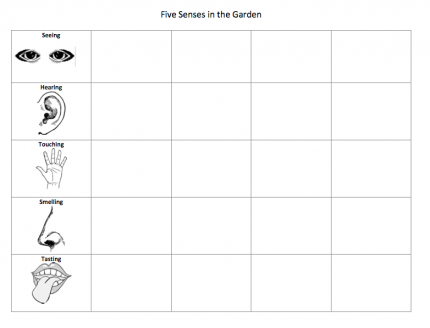 we’ve done some work with scale maps.) Gaining this understanding has helped me explain a few specific concepts better, but mostly, it’s helped me get better at going with the flow and focus on what concepts they ARE getting, rather than those they’re not.
we’ve done some work with scale maps.) Gaining this understanding has helped me explain a few specific concepts better, but mostly, it’s helped me get better at going with the flow and focus on what concepts they ARE getting, rather than those they’re not.
Scavenger hunts area great way to get the kids exploring the garden, giving them some guidance while allowing them to discover on their own. Kids love the idea of being detectives, and they love being scientists using clipboards! With Kindergarten classes, I have what I call the “Let’s Meet the Garden” scavenger hunt. One of their math requirements is measuring “using non-standard units”, so we search for things longer than a trowel, bigger than a bucket, smaller than a garden glove, etc.
In other scavenger hunts, we explore the garden using our 5 senses, we look for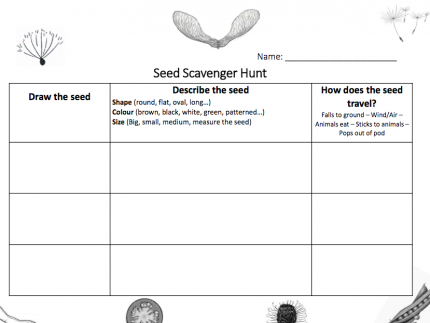 signs of the different seasons (grade 1: S&T: Understanding Earth and Space Systems (Daily and Seasonal Changes): 3.4 Describe and compare the four seasons), look for garden habitats, or find seeds and how they travel.
signs of the different seasons (grade 1: S&T: Understanding Earth and Space Systems (Daily and Seasonal Changes): 3.4 Describe and compare the four seasons), look for garden habitats, or find seeds and how they travel.
I’ve used memory games for a variety of purposes as well. I’ve created a compost memory game, where they not only make matches, but have to say whether the object should go in the compost, the garbage or the recycling.
I also have a “Where does our food come from?” memory game (Grade 3: Health and Physical Education: C. Healthy Living: C.1 Understanding Health Concepts: Healthy Eating: C1.1 Demonstrate an understanding of how the origins of food affect its nutritional value and environmental impact). Here, the students have to match the foods with their origins (e.g. tomatoes and ketchup, apples and apple juice, etc.). I’ve included some tricky ones, like beets and sugar, and always include a discussion at the end about what they learned and what surprised them.
While most people initially think of making science connections with garden programming, I’m always inspired to see just how interdisciplinary garden and food education can be! While reading through the curriculum, I had many moments of “Wow, I could teach ALL of grade 1 (or really any other elementary grade) in the garden!” Students can write poems, draw/paint pictures, learn process writin
g with recipes, act out garden food chains… So much room for creativity both on the part of educators and students!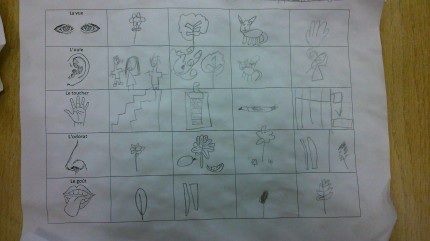
Besides the general looks of confusion when I tell people that I work as a School Garden Educator, I also get lots of questions along the lines of “Well that sounds like an interesting job, but what do you do in the winter?” Luckily, there is TONS of garden-based learning that can happen when the garden is under a layer of ice and snow. We can head out to the garden for a signs of winter scavenger hunt or look for signs of animals that live in or visit the garden in the winter. And we can spend time in the classroom learning about plant life cycles, exploring the parts of seeds, and doing seed viability tests. We can check out the worm bin and learn about composting. We can also start planning the coming season’s garden. This is something I’m trying to involve students in more this year. Suggestions and lesson plans on how to involve kids in garden planning and crop selection are more than welcome!
Happy growing!
https://seedlingstories.wordpress.com
